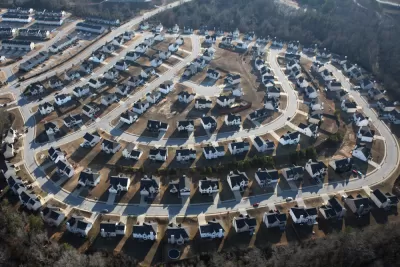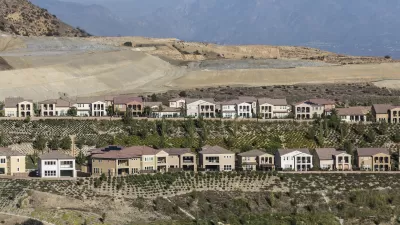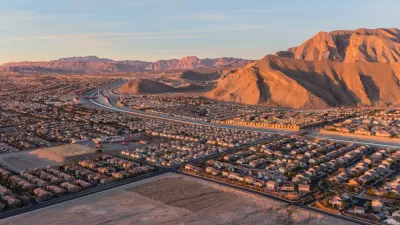For many decades now, most communities in the United States have grown as a series of subdivisions, built on a tried and true formula. It might be time to change the math.

"[Z]oning disputes typically only involve a few parcels of land at a time," according to Sarah Kobos. Controversial and headline-grabbing as some zoning disputes might be, "if you really care about the future of your city, you need to think bigger." One place to look to find the kind of scale Kobos seeks: subdivision regulations.
Kobos writes the local subdivision regulations wield tremendous power, but from obscurity. "Even the most battle-hardened veteran of the zoning wars would be hard pressed to explain what the subdivision regulations do."
That's where Kobos's article comes in: to explain the ins and outs of subdivision regulations, and why they matter to the experience and livability of communities. "If your city hasn’t re-evaluated its subdivision regulations in a while, you’re probably still replicating bad ideas from the 1970’s — creating inflexible, and auto-centric places," writes Kobos. As prescription for subdivision malaise, Kobos recommends a few "baby step" changes that can help implement incremental change with regard to block lengths, connectivity, and cul-de-sacs.
FULL STORY: You Care About the Subdivision Regulations, You Just Don't Know it (Yet)

Trump Administration Could Effectively End Housing Voucher Program
Federal officials are eyeing major cuts to the Section 8 program that helps millions of low-income households pay rent.

Planetizen Federal Action Tracker
A weekly monitor of how Trump’s orders and actions are impacting planners and planning in America.

Ken Jennings Launches Transit Web Series
The Jeopardy champ wants you to ride public transit.

Crime Continues to Drop on Philly, San Francisco Transit Systems
SEPTA and BART both saw significant declines in violent crime in the first quarter of 2025.

How South LA Green Spaces Power Community Health and Hope
Green spaces like South L.A. Wetlands Park are helping South Los Angeles residents promote healthy lifestyles, build community, and advocate for improvements that reflect local needs in historically underserved neighborhoods.

Sacramento Plans ‘Quick-Build’ Road Safety Projects
The city wants to accelerate small-scale safety improvements that use low-cost equipment to make an impact at dangerous intersections.
Urban Design for Planners 1: Software Tools
This six-course series explores essential urban design concepts using open source software and equips planners with the tools they need to participate fully in the urban design process.
Planning for Universal Design
Learn the tools for implementing Universal Design in planning regulations.
Heyer Gruel & Associates PA
Ada County Highway District
Institute for Housing and Urban Development Studies (IHS)
City of Grandview
Harvard GSD Executive Education
Toledo-Lucas County Plan Commissions
Salt Lake City
NYU Wagner Graduate School of Public Service





























